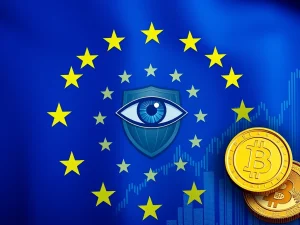Crypto Crime: Shocking Violent Attack on Paymium CEO’s Family in Paris

In a chilling reminder of the real-world dangers associated with digital wealth, a violent crypto kidnapping attempt unfolded in broad daylight in Paris. The target? The family of Paymium CEO, Pierre Noizat. This incident highlights a disturbing trend: the evolution of crypto crime beyond online scams to physical threats against individuals linked to the industry.
Brazen Crypto Kidnapping Attempt Foiled in Paris
The shocking incident took place on May 13th in Paris’s 11th district. Three masked assailants targeted the daughter and grandson of Paymium CEO Pierre Noizat as they walked with a male partner. The attackers attempted to force the daughter and her son into a waiting van.
Details of the struggle:
- The male partner was assaulted while trying to intervene.
- Noizat’s daughter bravely resisted the attackers.
- During the scuffle, she managed to disarm one assailant, throwing their gun away.
Passersby eventually intervened, causing the masked individuals to flee in their van, which was later found nearby. All three victims sustained injuries and required hospital treatment.
The Growing Threat: Offline Crypto Crime and Security
This Paris attack is not an isolated event but part of a worrying pattern of offline crypto crime. As significant wealth accumulates in digital assets, individuals associated with cryptocurrency, especially high-profile figures like a Paymium CEO, are increasingly becoming targets for physical attacks.
Experts are sounding the alarm about the need for enhanced crypto security measures, extending beyond digital wallets to personal safety. Michael Englander, CEO of Plasbit, issued a stark warning on X:
“If you’re in crypto and still flaunting it online, you’re not just stupid, you’re putting your family in danger.”
Crypto-focused lawyer Sasha Hodder noted on X that “crypto theft is evolving. It’s not just social engineering or SIM swaps anymore.”
Recent Examples of Crypto Kidnapping and Physical Attacks
The Paris attack adds to a growing list of physical incidents targeting crypto holders and entrepreneurs:
- **Las Vegas, May:** Teenagers allegedly kidnapped a man returning from a crypto event at gunpoint, robbing him of $4 million in crypto and NFTs.
- **Paris, May:** Police freed the father of a crypto entrepreneur held for days in a 7 million euro kidnapping plot.
- **Central France, January:** David Balland, co-founder of Ledger, was abducted from his home and held captive before being released by police.
Jameson Lopp, co-founder of Casa, maintains a public list documenting dozens of these “wrench attacks” – physical assaults or threats to extract crypto. So far this year, his list records 22 such incidents.
A University of Cambridge study found that these offline attacks are often underreported due to fear and involve various perpetrators, from organized crime to acquaintances.
What This Means for Crypto Security Awareness
The attempted crypto kidnapping of the Paymium CEO’s family serves as a critical wake-up call for everyone in the crypto space. While securing digital assets is paramount, personal security and discretion are becoming equally vital.
Actionable insights:
- Be mindful of publicly sharing your involvement or success in crypto.
- Review personal security measures, especially if you hold significant assets or are a known figure in the industry.
- Understand that the threat landscape includes physical risks, not just online vulnerabilities.
Conclusion
The bravery displayed by Paymium CEO Pierre Noizat’s daughter, aided by intervening citizens, prevented a potentially tragic outcome in this brazen Paris attack. However, the incident underscores a disturbing reality: crypto crime is becoming increasingly physical and dangerous. As the industry matures, addressing personal security and awareness of these evolving threats is as crucial as safeguarding private keys and digital wallets. The community must recognize the importance of discretion and robust security practices in this new era of crypto-linked risks.








